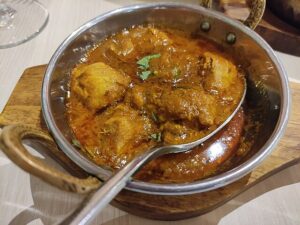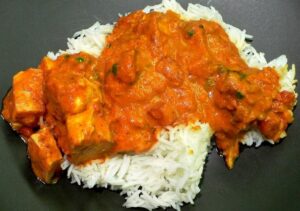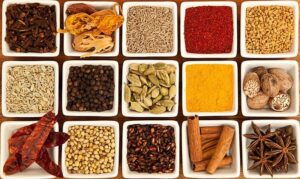The Rich History of Curry
Date post added: 24th July 2024
Did you pay a visit to your local Indian restaurant at the weekend? Perhaps you ordered a takeaway curry or cooked one yourself. After all, the curry’s become a staple part of the British diet. It’s up there as a treasured national dish, along with roast beef and fish and chips in England, or haggis, Irish Stew and cawl in Scotland, Ireland and Wales respectively.
But when and how did the fragrant, spicy deliciousness that we know as curry land on these shores? Where did it originate? Who first developed the spice blends that create a curry? In this blog, we’ll whet your appetite for curry and explore its rich history and travels from east to west.
Who first invented curry?
Let’s start with the word curry. The dish we picture when we think of curry is quite different from the traditional dish made in India. “Curry” comes from the Tamil word “kari”, which means “sauce”. The spiced dish dates back centuries, an integral part of the Indian subcontinent’s culinary traditions.
Just as the curry itself is a rich blend of spices and ingredients, the history of curry is a mix of cultural influences. In 1498, the Portuguese landed in Goa, South India bringing chilli with them. It was Portuguese explorers that introduced a dish using black pepper, tamarind and pork to South Indian cuisine. That dish was vindaloo. But chillis were adopted to replace the more expensive “black gold” pepper.
The Dutch reached India in 1605, followed by the French who arrived in South India in 1664. Colonisation resulted in traditional Indian cuisine being adjusted to meet the European influences, tastes and ingredients. So our idea of “curry” is several centuries away from its Tamil origins and several steps nearer to Western tastes.
The British curry
In the 18th century, there was a significant evolution in Indian history when the British East India Company came into being. It was the British attempt to halt Dutch and Portuguese expansion in the area. We explore this rich history in our East India Company walk, led by former diplomat, Lisa Honan. Join her to understand this transformative time.
Members of the British army and bureaucrats stationed in India during this time got a taste of Indian cuisine. Many decided to live in India of their own will after the 1857 Great Indian Uprising. Their cooks altered local dishes to fit the British palate, whilst making the most of their access to spices. As these Brits travelled around India, they spread their Anglo-Indian dishes – the modern style curry dishes that we recognise today.
When those Brits returned home in the late 18th century, they wanted to keep eating the delicious Indian food and flavours that they’d got used to. Traditional British food seemed a tad bland in comparison. Many brought Indian cooks back to the UK with them. For those that didn’t, London coffee houses began to serve variations of curry and rice. It was the Hindustani Coffee House that became known as the first Indian restaurant to open in Britain. And in 1747, The Art of Cookery Made Plain and Easy by Hannah Glasse was the first British cookery book to include Indian recipes.
Queen Victoria became Empress of India in 1877 and she was fascinated by the exotic Asian country. Although she never visited, she collected Indian furnishings and artworks, and was very partial to a curry. This boosted its popularity in Britain and gave rise to curry powders to use at home (a far cry from the authentic Indian spice blend). Don’t think that families nationwide were following curry recipes and tucking into chicken curry for dinner. It really was an upper and middle class thing at that time in the 19th century. Curry powder was also regularly used to disguise slightly off meat.
The British curry house
It wasn’t until the 20th century, and post World War II, that more people got a taste for Indian food. There was increased immigration from India to Britain. Many Bangladeshi men had served on British ships in the war, and they decided to stay in Britain and bring over their families from Bangladesh. It was these families that took over derelict cafes and started to serve Anglo-Indian curry dishes. They also introduced curry sauce to fish and chip shops.
London’s Brick Lane became a community centre for workers from Bengal who jumped ship in London and began working in Indian restaurants.
This immigration and introduction to new flavours continued over the next few decades. In the 1970s, chicken tikka masala was developed in the UK. This creamy curry recipe includes ground spices including ginger, roasted coriander seed, garlic, turmeric and coriander leaf. It’s said that a British customer declared the 16th century traditional, marinated chicken tikka was too dry, so the Indian chef added a tin of Campbell’s condensed tomato soup! That was far more palatable for the Brits but would never be served back in India. In 2001, chicken tikka masala was voted Britain’s favourite dish.
In the 1980s, immigrants from Pakistan created the balti – a tomato based sauce with cumin and coriander – in Birmingham. That’s become another national favourite.
Today, there are said to be more Indian restaurants in Greater London than in Mumbai and Delhi!
Learn more about Indian food history in our Biscuits and Banquets tour
What are the key spices for a curry?
Traditional northern Indian or Mughal spice blends contain raw cardamom seeds, cinnamon, cloves and black pepper. Coriander seeds and cumin seeds are used sometimes, but not hot or super spicy ingredients. In contrast, recipes from southern India contain the most pungent flavours, and often hot chillies.
How did curry travel around the world?
Just as people and goods have travelled around the world, so have cuisines and ingredients. As global trade, migration and travel increased, so did awareness of different foods and recipes.
During colonial times, Indian workers moved around the world and introduced many countries to traditional Indian flavours and recipes. This is especially true in the Caribbean, South East Asia and Africa. Trade links between the British and Japan, India and Thailand, created ties and shared influences.
Whilst local cooking methods and traditions remained in each country, they were blended with the flavours and recipes from India to create new, combined cultural dishes. Today’s regional curries are steeped in traditional Indian ideas, but have evolved to include local ingredients and specialities. For example:
- South East Asia: lemongrass, lime leaves, galangal and peanuts
- Caribbean: traditionally Mediterranean herbs such as thyme and parsley, tomato sauces and chillies such as Scotch Bonnet
- Africa: curry powders and peanuts are used in curry and served in bread rolls
- East Asia: soy sauce, rice wine and star anise
- America: corn and jalapeno chillies.
Whilst you can enjoy a curry across the world, be it South American or South Asian, it will feature local ingredients, flavours and influences. But in some way, it’ll reflect the traditional Indian curry.
Explore global cuisine in London
With its diverse population, London caters for all tastes. But which foods emerged in the capital city when? Enjoy the epicurean experiences, hear the global gourmand stories and discover the eclectic tasty (and tasteless) tales from across the city on our London foodie tours. Guided by Ann, a former journalist with a lifetime fascination of food, you’ll get wonderful insights into the relationship between London’s people and the things they eat.







